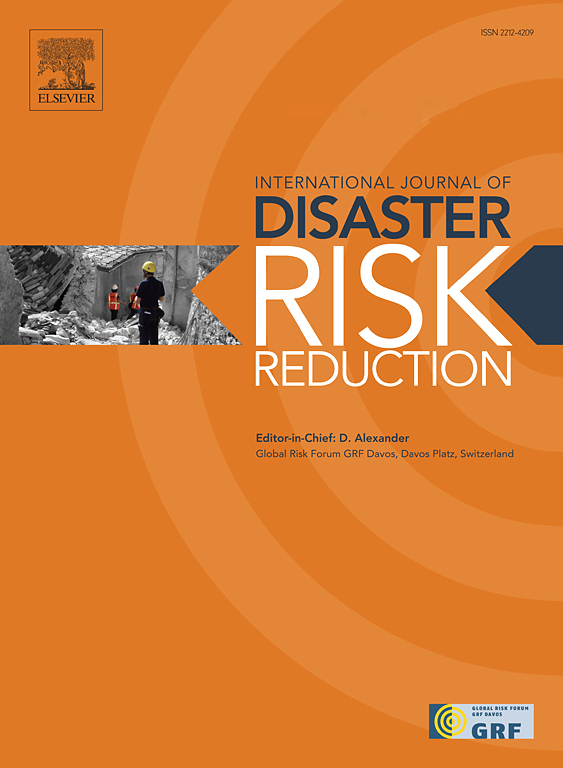Neglecting property-level food risk adaptation measures lead to overestimation in flood risk analysis – An empirical study
IF 4.2
1区 地球科学
Q1 GEOSCIENCES, MULTIDISCIPLINARY
International journal of disaster risk reduction
Pub Date : 2025-02-18
DOI:10.1016/j.ijdrr.2025.105326
引用次数: 0
Abstract
Combining structural and non-structural mitigation measures is a strategy for managing flood risk. Besides structural flood alleviation schemes and land-use planning, property-level flood risk adaptation (PLFRA) measures are complementary measures for effective flood risk management. However, quantitative knowledge about the implementation and damage-reducing effects on building structure of PLFRA measures is scarce. Accordingly, the mitigation of vulnerability is rarely considered in flood risk assessment. Here, we collect data on PLFRA measures through a field survey, present a method for incorporating PLFRA into flood risk analysis, and conduct an analysis of their damage-reducing effects. With this approach, flood risk analysis is based on known object-specific vulnerability, rather than on assumptions on overall risk reduction by PLFRA measures. The results show that 16 % of the buildings are protected through PLFRA measures, and the expected annual damage (EAD) is reduced by around 18 %. On average, the PLFRA measures protect the respective houses against flood damage up to a flow depth of 0.6m. Further, 17 % of the buildings had a level of protection that could not be attributed to explicit PLFRA measures but was still considered effective. The average protection level of all buildings is up to 0.3m, and the EAD is reduced by around 23 %. If all buildings in the hazard zones were protected by PLFRA measures with a protection level of 0.5m, the EAD could be reduced by 50 %. The results presented provide robust evidence that neglecting PLFRA measures in flood risk analysis leads to an overestimation of flood risk.
求助全文
约1分钟内获得全文
求助全文
来源期刊

International journal of disaster risk reduction
GEOSCIENCES, MULTIDISCIPLINARYMETEOROLOGY-METEOROLOGY & ATMOSPHERIC SCIENCES
CiteScore
8.70
自引率
18.00%
发文量
688
审稿时长
79 days
期刊介绍:
The International Journal of Disaster Risk Reduction (IJDRR) is the journal for researchers, policymakers and practitioners across diverse disciplines: earth sciences and their implications; environmental sciences; engineering; urban studies; geography; and the social sciences. IJDRR publishes fundamental and applied research, critical reviews, policy papers and case studies with a particular focus on multi-disciplinary research that aims to reduce the impact of natural, technological, social and intentional disasters. IJDRR stimulates exchange of ideas and knowledge transfer on disaster research, mitigation, adaptation, prevention and risk reduction at all geographical scales: local, national and international.
Key topics:-
-multifaceted disaster and cascading disasters
-the development of disaster risk reduction strategies and techniques
-discussion and development of effective warning and educational systems for risk management at all levels
-disasters associated with climate change
-vulnerability analysis and vulnerability trends
-emerging risks
-resilience against disasters.
The journal particularly encourages papers that approach risk from a multi-disciplinary perspective.
 求助内容:
求助内容: 应助结果提醒方式:
应助结果提醒方式:


